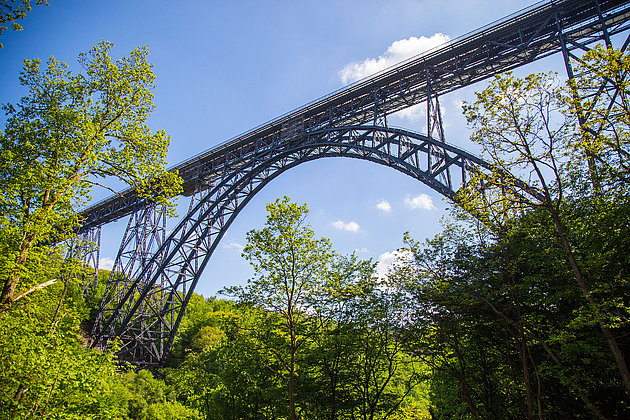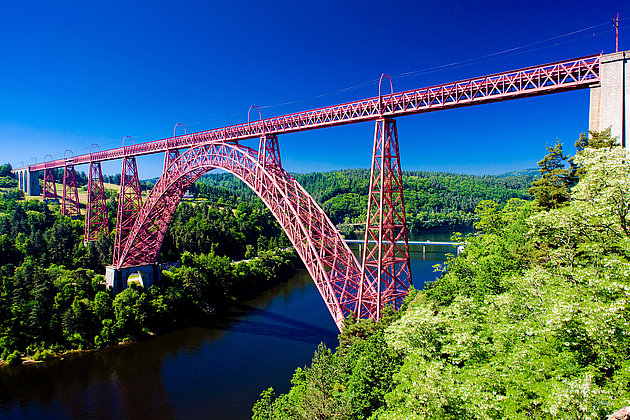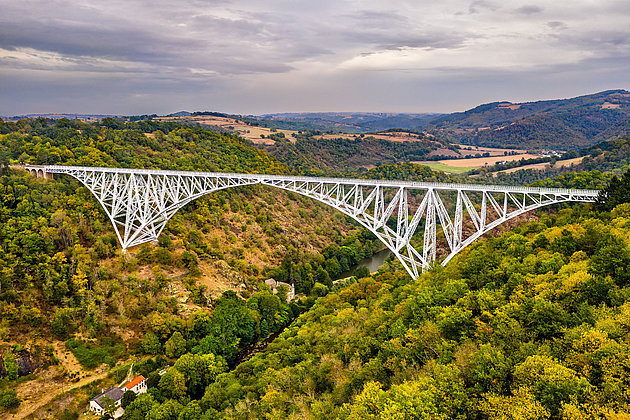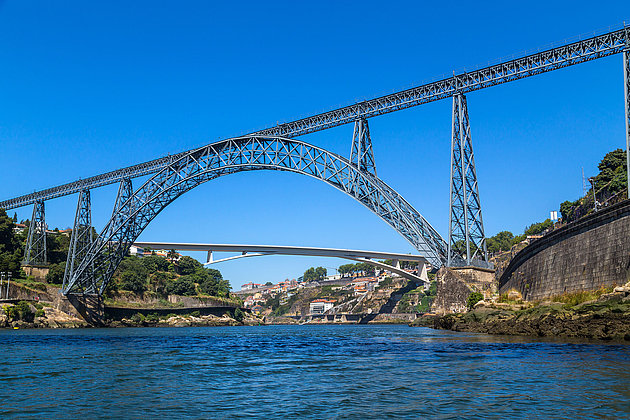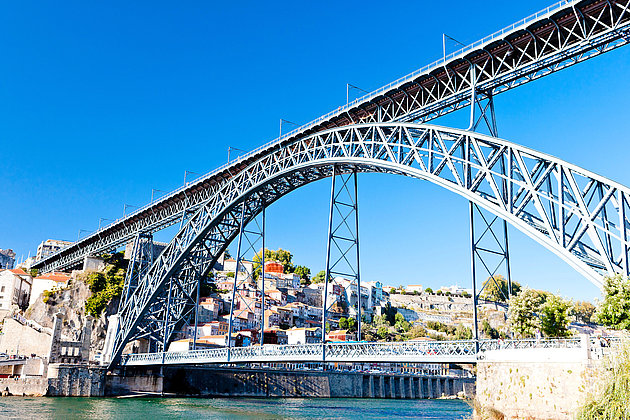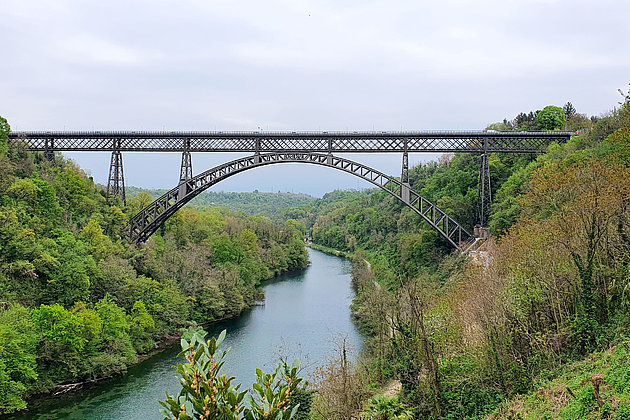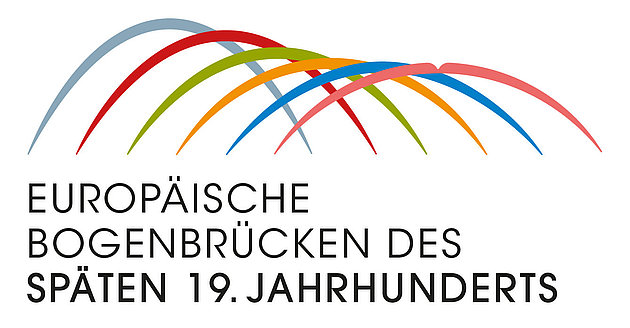© Federmann & Kampczyk design
Bridge Community
The six European large arch bridges represent the course of the technical development of this bridge type in European countries in the 19th century without any gaps. New materials and new knowledge made possible previously unattainable spans that seemed to defy gravity.
For the first time, it was possible to bridge deeply cut valleys and thus open up important transportation routes. Scientific and theoretical knowledge of statics was combined with new practical implementations of iron and steel structures and assembly technologies. The bridges were built almost exclusively using free cantilevering, meaning without scaffolding - a method that is still common today.
They are remarkable testimonies to industrialization in Germany and Europe in the last third of the 19th century. They impressively demonstrate the scientific and technical capabilities of the respective nation, but at the same time they also bear witness to European exchange.
A glance at history shows that the six bridges were built at a time when Europe was seething. But even if "big" politics clearly separated the nations, the competition between the bridge builders was very constructive. Engineers and construction companies competed to outdo each other with ever larger and more daring designs. In order to become better and better, they learned from each other and exchanged knowledge, carried forward the construction principles of others, and found new ways to implement them. In this exchange, the art of building large bridges developed to perfection.
The bridges are still in use today, yet they have not changed. The structure of the environment in which they are embedded has also remained unchanged. All six bridges are listed as historic monuments in their respective countries.
Müngstener Brücke
- Solingen - Remscheid - Wuppertal / Deutschland
- Anton von Rieppel/Bernhard Rudolf Bilfinger – 1893-1897
Müngstener Brücke spans the river Wupper connecting the cities of Remscheid and Solingen. With a height of 107 meter, a 170 meter span and a length of 465 meter, the double-line bridge is the highest rail- way bridge in Germany. It is a masterpiece and represents state-of-the-art engineering work during the Second Industrial Revolution in the late 19th century in Germany.
Viaduc de Garabit
- Ruynes-en-Margeride / Frankreich
- Gustave Eiffel / Maurice Koechlin – 1880-1884
Viaduc de Garabit spans the River Truyère near Ruynes-en-Margeride in France with a height of 122 meter, a span of 165 m and a length of 565 meter. The wrought iron viaduct is a remarkable work of Gustave Eif- fel and was the world’s highest bridge of its time.
Viaduc du Viaur
- Tauriac-de-Naucelle – Tanus / Frankreich
- Paul-Joseph Bodin – 1895-1902
Viaduc du Viaur spans the valley of the Viaur as a single-lane railway bridge and is still the largest steel bridge in France to this day. The Viaur Viaduct is located in the territory of the municipalities of Tauriac-de-Naucelle and Tanus, and connects the departments of Aveyron and Tarn. Bodin designed it as a combined bow and cantilever bridge with a span of 220 meter, the two cantilevers support each other in the middle by a joint.
Ponte Maria Pia
- Porto – Vila Nova de Gaia / Portugal
- Gustave Eiffel / Theophile Seyrig – 1875-1877
Ponte Maria Pia crosses the river Douro from Porto to Vila Nova de Gaia, with a height of 61 meter, a span of 160 and a length of 563 meter. The bridge has had a significant role in the history of railway bridge design and construction because the latest engineering techniques were used for constructing the central arch.
Ponte Dom LuÍs I.
- Porto – Vila Nova de Gaia / Portugal
- Theophile Seyrig – 1886
Ponte Dom LuÍs I. crosses the river Douro between the cities of Porto and Vila Nova de Gaia in Portugal. This double-decked wrought iron arch bridge for light trains and cars surpasses with a 172 meter span the nearby Ponte Maria Pia. The suspended roadway on the lower level is a distinctive feature of this bridge.
Ponte San Michele
- Paderno d´Adda - Calusco d´Adda / Italy
- Jules Röthlisberger – 1887-1889
Ponte San Michele crosses the river Adda near Milan between Paderno d’Adda and Calusco d’Adda. This wrought iron viaduct with the special feature of a railway line inside the girder and a street above on a height of 85 meter, the span is 150 meter wide. This wrought iron bridge is a significant example of knowledge transfer in Europe by the swiss engineer Röthlisberger and the industrialisation in Italy at the end of the 19th century.
BRIDGES AS A DESIGN FAMILY
Six colorful arches, of different heights and shapes, unite to form a whole, a family. This is illustrated by the logo of the bridge community: European arch bridges of the late 19th century. Each bridge is assigned a color. Together they are a family. The logo thus also stands for the future World Heritage Foundation. It will be founded as an umbrella organization as soon as the necessary structures have been established in all countries.
The high, gray arch stands for the Müngsten Bridge. The logo of the "Welterbe Müngstener Brücke" development association is derived from this. Analogously, the logos for the associations in the participating countries have already been developed and can be used there in the future.

